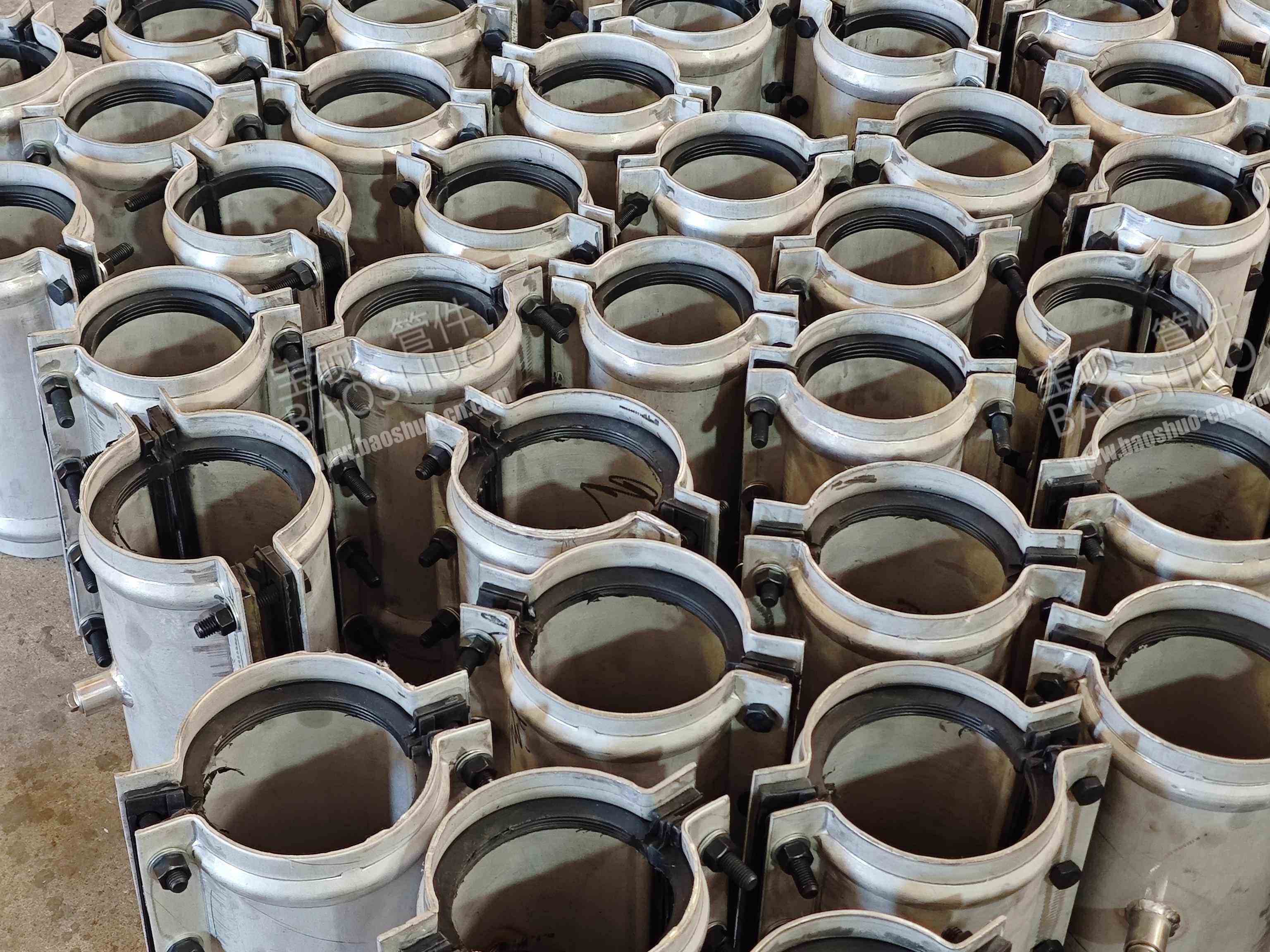Which connection method of PPR pipe is prone to water leakage? What are the advantages of using leak repair clamps to repair it?
Which connection method of PPR pipe is prone to water leakage? What are the advantages of using leak repair clamps to repair it?
🧿1. PPR Pipe Connection Methods Most Prone to Leaks
The most common and core connection method for PPR pipes is hot-melt. In theory, if performed correctly, a hot-melt connection can outlast the pipe itself and is highly reliable. Therefore, rather than saying that a particular connection method is inherently prone to leaks, it's more likely that improper hot-melt operation is the primary cause of leaks.
The following are several common hot-melt connection errors that can easily lead to leaks:
1. Improper Hot-melt Temperature:
Excessively high temperatures can cause the PPR material to over-melt, resulting in excessive compression during connection. This can cause "weld bumps" to form inside the fitting, severely reducing the water-passing diameter and increasing flow resistance. This can also pose a long-term risk of pipe bursts. Carbonization can also affect strength.
Excessively low temperatures can prevent the material from fully melting, preventing molecular fusion and resulting in a "glued" connection. This results in extremely low strength and can easily break apart under pressure.
2. Improper Hot-melt Time:
Excessively long times can have the same effect as excessive temperatures, creating weld bumps. Too short a time: The effect is similar to "too low a temperature," resulting in a weak fusion.
3. Improper or crooked insertion depth:
If the insertion is too shallow, the effective weld area is insufficient, resulting in insufficient strength.
If the insertion is too deep, weld bumps will also form and block the pipe.
If the insertion is crooked, the weld ring thickness will be uneven, making it prone to leaks at weak points.
4. Rotating or loosening the pipe after hot fusion: During the cooling and solidification period after fusion, rotating or moving the pipe will disrupt the forming molecular chains, causing a "false weld"—a connection that appears to be established but leaks at the slightest touch.
Conclusion: The most prone to problems is the "hot fusion" process. Additionally, using inferior PPR pipes and fittings, or improperly sealing the threaded ends of mechanical connectors (such as PPR unions with threaded ends), can also cause leaks, but the probability is much lower than improper hot fusion.
🧿 2. Advantages of Using Leak Repair Clamps
When a PPR pipe leaks, if the situation is urgent or re-heat-fusing is not feasible (e.g., pipes in walls, in confined spaces, or with water trapped in the pipes), a leak repair clamp (also known as a "leak repair clamp" or "pipe patch") is an excellent emergency and permanent repair solution.
The advantages are primarily reflected in the following aspects:
1. No need to shut down or drain the pipe:
This is one of the biggest advantages. For heat-fusing repairs, the pipes must be completely drained and kept dry. Leak repair clamps, however, can be installed directly even with a minor leak. Their internal sealing ring seals the leak, making them ideal for emergency situations where prolonged water outages are unfeasible.
2. Extremely easy and quick to use:
No specialized heat-fusing tools, power supplies, or other complex tools are required.
Installation typically requires only a wrench, and even ordinary users can operate the system by following the instructions.
Repair time, from preparation to completion, can take only a few minutes, quickly restoring water supply.
3. Wide range of applications:
It can be used to repair leaks from a variety of sources, such as pinholes, cracks, and minor joint leaks. It's suitable not only for PPR pipes, but also for pipes made of various materials, including PVC, steel, and copper.
4. No special skills required:
Hot-melt connections require trained, skilled labor, while leak repair clamps require minimal installation skills, reducing both repair requirements and labor costs.
5. It's a non-destructive repair:
The leak repair clamp wraps around the damaged area, eliminating the need to cut or damage the existing pipe structure. If a permanent hot-melt repair is needed in the future, simply remove the leak repair clamp.
The housing is typically made of metals such as ductile iron and carbon steel, which are corrosion-resistant and high-strength. It can last the same life as the original pipe, eliminating the need for frequent repairs. Baoshuo brand carbon steel half joints are available in a variety of rubber materials, including NBR, EPDM, FKM, and silicone rubber. The half joint body is available in Q235 carbon steel and 304 and 316L stainless steel.
The following are Baoshuo brand oil-resistant pipe repair clamps, high-temperature-resistant pipe repair clamps, acid- and alkali-resistant pipe repair clamps, stainless steel pipe repair clamps, high-pressure-resistant pipe repair clamps, and large-diameter pipe repair clamps.
🧿Summary and Recommendations
Leakage Root Cause: Nine out of ten PPR pipe leaks are caused by improper hot-melt connection construction. Leak Repair Clamp Selection: When a leak occurs, a leak repair clamp is an excellent, quick, and effective repair solution that doesn't require shutting down the water supply or draining the pipe. It's particularly suitable for emergency repairs and permanent repairs where hot-melt joints are inconvenient.
It's recommended to always have a PPR pipe leak repair clamp of the appropriate size at home for emergencies. For pipes buried in walls, if conditions permit, the most thorough repair method is still to chisel open the wall, remove the problematic pipe section, and replace it with a standard hot-melt joint.















